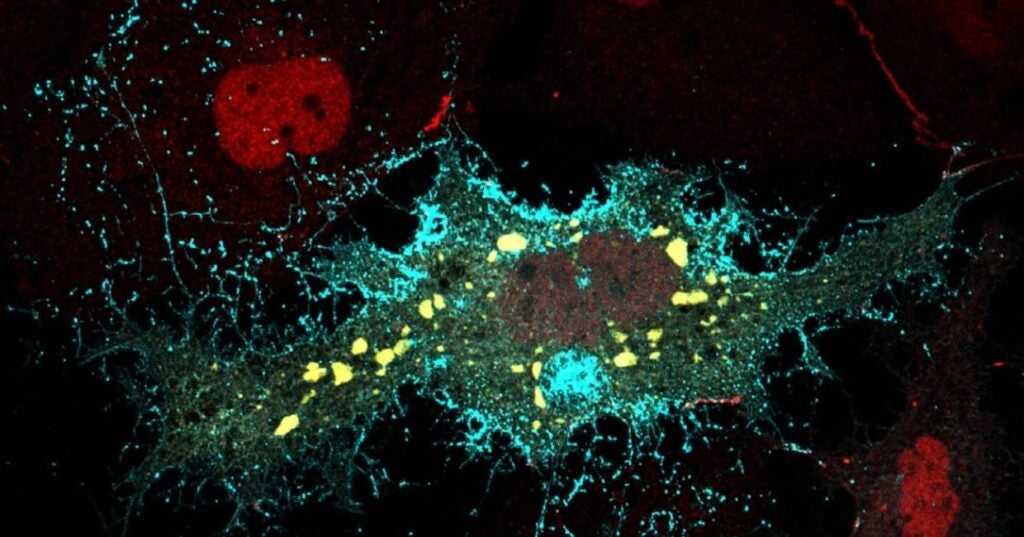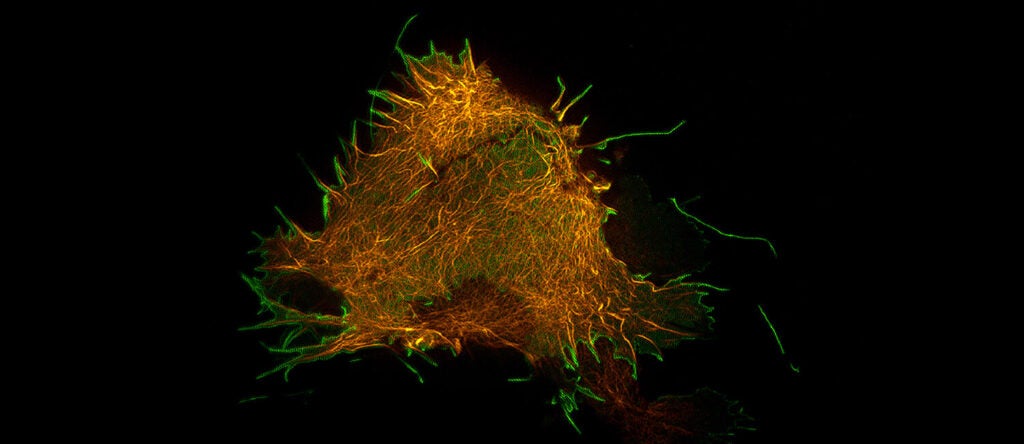Harty Laboratory
Research Overview
At the Harty Laboratory, we focus our research on three main areas:
- The molecular dynamics and biological significance of virus-host interactions during late stages of RNA virus assembly and egress.
- The identification and development of host-oriented therapeutics as a new class of antiviral inhibitors.
- The interplay between the host innate immune response and RNA virus infection.
Our model virus systems to interrogate these topics include:
- Filoviruses (Ebola and Marburg viruses)
- Arenaviruses (Lassa fever and Junín viruses)
- Rhabdoviruses (VSV)
- Retroviruses (HIV-1 and HTLV-1)
About Us
- Dr. Ziying Han, Senior Research Scientist
- Dr. Shantoshini Dash, Postdoctoral Researcher
- Dr. Jingjing Liang, Postdoctoral Researcher
- Ariel Shepley-McTaggart, VMD/PhD Graduate Student, MVP Program
- Mr. Michael P. Schwoerer, Penn Undergraduate Researcher
Viruses go modular. Shepley-McTaggart A, Fan H, Sudol M, Harty RN. J Biol Chem. 2020 Apr 3;295(14):4604-4616. doi: 10.1074/jbc.REV119.012414. Epub 2020 Feb 28. PMID: 32111739
Hippo signaling pathway regulates Ebola virus transcription and egress. Liang J, Djurkovic MA, Leavitt CG, Shtanko O, Harty RN. Nat Commun. 2024 Aug 13;15(1):6953. doi: 10.1038/s41467-024-51356-z. PMID: 39138205
Contrasting effects of filamin A and B proteins in modulating filovirus entry. Shepley-McTaggart A, Liang J, Ding Y, Djurkovic MA, Kriachun V, Shtanko O, Sunyer O, Harty RN. PLoS Pathog. 2023 Aug 16;19(8):e1011595. doi: 10.1371/journal.ppat.1011595. eCollection 2023 Aug.PMID: 37585478
Micronutrients at Supplemental Levels, Tight Junctions and Epithelial Barrier Function: A Narrative Review. DiGuilio KM, Del Rio EA, Harty RN, Mullin JM. Int J Mol Sci. 2024 Mar 19;25(6):3452. doi: 10.3390/ijms25063452.
Compound FC-10696 Inhibits Egress of Marburg Virus. Han Z, Ye H, Liang J, Shepley-McTaggart A, Wrobel JE, Reitz AB, Whigham A, Kavelish KN, Saporito MS, Freedman BD, Shtanko O, Harty RN. Antimicrob Agents Chemother. 2021 Jun 17;65(7):e0008621. doi: 10.1128/AAC.00086-21. Epub 2021 Jun 17. PMID: 33846137

Director, Harty Laboratory
Ronald N. Harty, PhD
Professor of Pathobiology and Microbiology
Find Us
University of Pennsylvania
School of Veterinary Medicine
3800 Spruce Street
Philadelphia, PA 19104-4539

Research on key host pathways has implications for Ebola and beyond (link is external)
Mortality rates from Ebola outbreaks can be as high as 90%, according to the Centers for Disease Control and Prevention, and 55 people died in the most recent outbreak in…

Harnessing an innate protection against Ebola (link is external)
In their evolutionary battle for survival, viruses have developed strategies to spark and perpetuate infection. Once inside a host cell, the Ebola virus, for example, hijacks molecular pathways to replicate…

Blocking viruses’ exit strategy (link is external)
The Marburg virus, a relative of the Ebola virus, causes a serious, often-fatal hemorrhagic fever. Transmitted by the African fruit bat and by direct human-to-human contact, Marburg virus disease currently…
